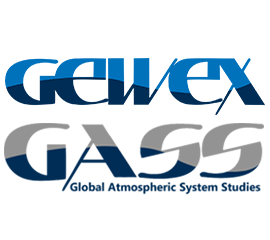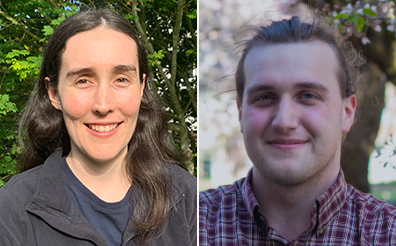Pan-GASS Meeting Further Strengthens Ties Between ARM and Modelers
Published: 26 September 2022
ARM staff and users present at conference of international weather and climate scientists
 The Atmospheric Radiation Measurement (ARM) user facility maintains long-term relationships with several scientific communities that have informed its mission to improve climate and earth system models.
The Atmospheric Radiation Measurement (ARM) user facility maintains long-term relationships with several scientific communities that have informed its mission to improve climate and earth system models.
One of these groups is the Global Energy and Water Exchanges/Global Atmospheric System Studies (GEWEX/GASS) community. Members of the GEWEX/GASS community contribute to the development of atmospheric models through process studies with observations.
Every three to four years, the GEWEX/GASS panel holds a Pan-GASS meeting of international weather and climate scientists, including observationalists and modelers. Participants discuss progress toward improving the representation of atmospheric processes in models. They also coordinate initiatives and plan for future projects.
The 3rd Pan-GASS Meeting, Understanding and Modeling Atmospheric Processes took place from July 25 to 29, 2022, in Monterey, California. As with past Pan-GASS meetings, ARM staff and users held key roles in the 2022 event.
ARM science translator Shaocheng Xie serves as a co-chair of the Pan-GASS organizing committee. Xie is a research scientist at Lawrence Livermore National Laboratory (LLNL) in California.
LLNL staff scientist Cheng Tao also is on the organizing committee. Tao, Xie, and Yuying Zhang work on ARM modeling data products at LLNL. Zhang presented a Pan-GASS poster on ARM radar and lidar simulators for improving the comparison of modeled and real-world clouds.
Xie led a breakout group discussion on a GASS project studying the diurnal cycle of precipitation. One of the project’s key components is a long-term single-column model intercomparison that used ARM data from Oklahoma and Brazil.
Yunyan Zhang, a member of ARM’s User Executive Committee, gave a keynote talk that featured ARM data. Zhang, a staff scientist at LLNL, discussed observations of locally generated convection over land and the mechanisms that drive it.
Meanwhile, ARM Engineering and Process Manager Jennifer Comstock presented updates on ARM data products and capabilities that are useful for model development and evaluation.
Early Career Awards and Future Projects

As part of a new program, ARM provided travel support grants for two early career scientists, Kelly Balmes and August Mikkelsen, to present at Pan-GASS.
Balmes works as a postdoctoral researcher at the Cooperative Institute for Research in Environmental Sciences (CIRES)/NOAA Global Monitoring Laboratory. Balmes and CIRES/NOAA colleagues used radar and lidar data from multiple ARM sites to study regime-specific cloud vertical overlap characteristics.
Mikkelsen is a graduate student at the University of Wyoming. To learn how cyclones outside the tropics can affect aerosols in the free troposphere, Mikkelsen and his collaborators analyzed data from ARM’s Eastern North Atlantic atmospheric observatory west of mainland Portugal.
Pan-GASS presentations also included projects in the works that are expected to benefit from the use of ARM data.
One example is a model intercomparison project presented by Timothy Juliano of the National Center for Atmospheric Research. This project is based around the Cold-Air Outbreaks in the Marine Boundary Layer Experiment (COMBLE). ARM conducted the COMBLE field campaign from December 2019 through May 2020 in northern Norway.
Comstock and Xie say that discussions will be forthcoming about potential ARM participation in other initiatives presented at Pan-GASS.
Keep up with the Atmospheric Observer
Updates on ARM news, events, and opportunities delivered to your inbox
ARM User Profile
ARM welcomes users from all institutions and nations. A free ARM user account is needed to access ARM data.


















